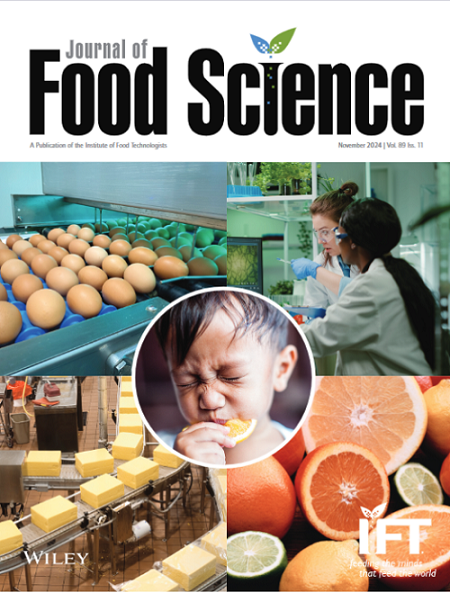Preparation and Characterization of Edible Coatings Containing Fish Gelatin/Gallic Acid and Its Application in Oyster Preservation
Abstract
Edible coatings are an effective strategy for maintaining food quality and extending shelf life. This study utilized fish gelatin (GE) from tilapia (Oreochromis niloticus), grass carp (Ctenopharyngodon idella), and sea bass (Lateolabrax japonicus) as a matrix to prepare edible coatings with UV-C-irradiated gallic acid (UVC-GA). After characterizing the mechanical and antioxidant properties of the coatings, they were applied to freshly shucked oysters, which were then stored at 0°C for eight days. The quality preservation effects of the coatings on oysters were comprehensively evaluated using indicators such as color, sensory attributes, pH, muscle structure, total viable count (TVC), total volatile basic nitrogen (TVB-N), and biogenic amines (BAs). Results indicated that the composite coatings made from fish GE and UVC-GA exhibited good mechanical properties and antioxidant performance. They effectively preserved the color, sensory attributes, and muscle structure of oysters while reducing lipid oxidation and inhibiting the decrease in ph. The composite coatings suppressed microbial growth and the increase in TVB-N while reducing the production of BAs. Compared to using UVC-GA alone, the composite coatings exhibited a more significant impact on maintaining oyster quality during refrigeration. In this study, the composite coatings extended the shelf life of oysters by approximately four days. These findings suggest that the combined use of fish GE and UVC-GA is a promising approach for maintaining the quality of refrigerated seafood products. The prepared composite coatings demonstrate great potential for practical application in food preservation.





 求助内容:
求助内容: 应助结果提醒方式:
应助结果提醒方式:


